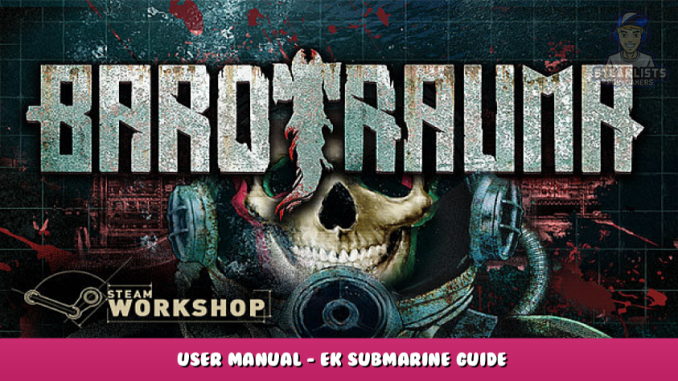
Comprehensive SRN Field Manual for Submarine Vessels and Shuttles
- In-Depth Vessel Guides and Layout
- Technical Specifications Reference
- Advanced Systems and Operations Manual
EK Skipper (Scout)
"The Skipper is a compact scout vessel designed to be relatively cheap while still maintaining robust systems functionality. A modular 'all in one' reactor system provides electricity for the entire vessel in a relatively small package. The Skipper also carries a small fabrication bay and onboard first-aid locker."
Vessel Overview:
Designation: EC-448 Skipper
Classification: Scout
Role: Scout
| Cost | Relative Vessel Strength | Relative Crew Requirement | Recommended Crew | Recommended Difficulty | Level Of Experience |
|---|---|---|---|---|---|
| 6,000(mk) | Low | Very Low | 3 to 6 | Starter (0%-25%) | No Requirement |
Specifications:
| Clearance | Max Horizontal Speed* | Max Descent Speed | Max Ascent Speed | Reactor Rating | Engine Rating |
|---|---|---|---|---|---|
| 30.25(m) 9.5(m) |
53(km/h) | 14(km/h) | 18(km/h) | 6,000(kw) | 1,200 (800) (400) |
*Due to unlimited physics acceleration, maximum horizontal velocity does not give an accurate representation of submarine maneuverability.
| Cargo Capacity | Ammo Box Capacity | Shell Capacity |
|---|---|---|
| 12(crates) | 6(crates) | None |
| Hull |
|
Volume | 769,024 | Ballast Volume | 120,576 |
|---|---|---|---|---|---|
| Entrances |
|
Weapon Systems |
|
Fabrication |
|
Notable Features:
- Compact Hull Design
- Moderate Reserve Ammunition Storage
- Compact Reactor System
- Basic Engineering Bay
- Basic First-Aid Stash
- Basic Armory
- Outboard Engine Pod
Vessel Layout:
The Skipper’s Command and Gunnery Compartment is located at the front of the ship. The furthest forward compartment is the Armory. The Forward Ballast is accessed via a hatch in the compartment floor.
The hull widens towards the mid allowing two decks to be fitted, the upper deck consists of the Upper Docking Port – containing 5 diving suits and 10 recharging oxygen tanks – and the Crew Quarters – containing life support and berthing for the crew.
The lower deck consists of Engineering – containing fabrication facilities and a crate rack, the Lower Docking Port – containing a crate rack, and the Stowage Compartment – containing first-aid supplies and spare crew equipment storage.
The Reactor Room sits in the rear compartment, as well as the Junctions. The Rear Ballast is accessed via a hatch in the compartment floor. The furthest rearward compartment is the Engine Room – containing the primary and auxiliary engines as well as a crate rack.
Ship Systems:
- All compartment doors are fitted with standard delay self-closing non-lock system.
Doors will close automatically after 4 seconds. Delay can be edited by accessing the delay component directly above the respective door, or located to the left side in the case of hatches. - The armory is only accessible by Security or Command authorized ID.
An access override above the interior side can be used to allow unrestricted armory access. - Reactor control is toggled by the lever on the lower forward face. A green pulsing lamp on the upper face indicates control is active. On the command console this is indicated with a solid green lamp labeled ‘A’.
[Advanced Users Only] Reactor tuning variables can be accessed by the two orange ports on the upper forward face. The stock Turbine Output Multiplier and Fissionrate Divisor are 0.016 and 75 respectively. - Integral battery system is automatically controlled and inaccessible for maintenance.
System is compatible with charge rate and capacitance upgrades.
EK Kira (Deep-Diver)
"The Kira class submarine is the first of a series of next-generation multipurpose hulls. Designed for capability and versatility, nearly every aspect of the program has been designed from the ground up to produce a highly effective all-purpose vessel with a relatively cheap production cost. Hull construction improvements, engine improvements, reactor improvements, weapons systems improvements. A modular design platform allows the Kira to be refitted depending on the requirements of its assignment."
Vessel Overview:
Designation: EC-402 Kira (G-424)
Classification: Deep Diver
Role: Multi-Role Vessel
| Cost | Relative Vessel Strength | Relative Crew Requirement | Recommended Crew | Recommended Difficulty | Level Of Experience |
|---|---|---|---|---|---|
| 15,000(mk) | Moderate | Low | 5 to 10 | Medium (25%-75%) | No Requirement |
Specifications:
| Clearance | Max Horizontal Speed* | Max Descent Speed | Max Ascent Speed | Reactor Rating | Engine Rating |
|---|---|---|---|---|---|
| 42.5(m) 11.0(m) |
46(km/h) | 20(km/h) | 18(km/h) | 5,000(kw) | 2,500 |
*Due to unlimited physics acceleration, maximum horizontal velocity does not give an accurate representation of submarine maneuverability.
| Cargo Capacity | Ammo Box Capacity | Shell Capacity |
|---|---|---|
| 16(crates) (8 wet) |
21(crates) | 9(shells) |
| Hull |
|
Volume | 1,625,344 | Ballast Volume | 379,904 |
|---|---|---|---|---|---|
| Entrances |
|
Weapon Systems |
|
Fabrication |
|
Notable Features:
- Moderate Reserve Ammunition Storage
- Compact Power Grid
- Advanced Reactor
- Engineering Bay
- Small Medical Bay
- Simple Drain Hatches
Vessel Layout:
The Kira’s forward most compartment is the upper deck Armory. Rear of the Armory is the ship’s primary magazine (Gunnery Compartment) – lower ammo loaders are recessed into somewhat the deck floor, rear of that is the Command compartment and fire-control. A hatch in the floor of the Command compartment allows access to Ballast Tanks A and B as well as additional ammo storage.
The stairwell Amidships provides access to the crew areas, the Medical Bay, and both Upper and Lower Airlock Access. The lower deck Medical Bay is a single compartment with hospital bed, medical fabricator, as well as storage for first-aid supplies and chemical reagents.
Both airlocks are divided into an inner “ready room” each with 6 recharging oxygen tanks and outer wet room with diving supplies cabinets. Only the upper airlock contains storage for 10 diving suits.
An exterior Stowage Compartment is also located rearward of the Upper Docking Port, containing a deconstructor and storage for one artifact.
The Reactor Room sits in the rear-mid section of the ship and has a raised ceiling. A hatch in the floor of the Reactor Compartment allows access to the small Ballast Tank C. Rearward of the Reactor is the Electrical compartment – which contains the ship’s junction boxes, batteries, and a tools cabinet. A hatch in the floor of the Electrical compartment allows access to Ballast Tanks D and E as well as additional crate shelves.
In the rear of the ship is the Engineering compartment, which contains fabrication facilities and storage for a large amount of resources and 8 crates. The rearmost compartment is the Engine Room which contains an vessel Status Monitor.
Ship Systems:
- All compartment doors are fitted with standard delay self-closing non-lock system.
Doors will close automatically after 4 seconds. Delay can be edited by accessing the delay component directly above the respective door, or located to the left side in the case of hatches. - The armory is accessible by any crew ID unless security lock is activated via the above set of buttons. Security lock can be toggled by any Security or Command authorized ID.
The medical bay lock can be toggled by any Medical authorized ID. - Auxiliary engine turbine can be toggled from the main Navigation Terminal. When active, RPM acceleration and engine power usage is increased. Top speed is unaffected.
- Full mainline power system can be toggled by the large yellow button on the left of the Reactor console.
- Reactor control is toggled by the lever on the far right of the console. A yellow pulsing lamp on indicates control is active.
[Advanced Users Only] Reactor tuning variables can be accessed by the two orange ports below the reactor console. The stock Turbine Output Multiplier and Fission Rate Divisor are 0.02 and 75 respectively. - Docking port power flow can be toggled via the lever on the left side of the reactor room. An orange lit display shows the flow direction (IN,OUT). IN = Receiving power: for use when docked to a station or other power supply. OUT = Transmitting power: for use when supplying electricity to another docked vessel.
- Battery charge system is automatically controlled and inaccessible for maintenance.
System is compatible with charge rate and capacitance upgrades.
EKM Myrith (Attack)
"The Myrith class gunboat is a mass-produced patrol vessel built around a powerful nose-mounted railgun, allowing the Myrith to contend with other hostile subs often much larger than itself. Originally designed for short duration anti-piracy activity and merchant escort, it lacks the crew amenities and equipment for longer-duration, in addition to a rather undersized reactor, resulting in relatively cheap production cost."
Vessel Overview:
Designation: MP-771 Myrith
Classification: Attack
Role: Patrol Vessel & Escort
| Cost | Relative Vessel Strength | Relative Crew Requirement | Recommended Crew | Recommended Difficulty | Level Of Experience |
|---|---|---|---|---|---|
| 15,000(mk) | Moderate | Low | 5 to 10 | Medium (0%-50%) | No Requirement |
Specifications:
| Clearance | Max Horizontal Speed* | Max Descent Speed | Max Ascent Speed | Reactor Rating | Engine Rating |
|---|---|---|---|---|---|
| 26.5(m) 10.0(m) |
39(km/h) | 21(km/h) | 19(km/h) | 6,500(kw) | 600 (400) (200) |
*Due to unlimited physics acceleration, maximum horizontal velocity does not give an accurate representation of submarine maneuverability.
| Cargo Capacity | Ammo Box Capacity | Shell Capacity |
|---|---|---|
| 4(crates) | 6(crates) | 9(shells) |
| Hull |
|
Volume | 691,712 | Ballast Volume | 175,616 |
|---|---|---|---|---|---|
| Entrances |
|
Weapon Systems |
|
Fabrication | None |
Notable Features:
- Small Reactor System
- Fixed-Mount Railgun with slightly improved cyclic rate
- Small Medical Supplies Cabinet
- Small Onboard Armory
- Armory & Airlock Security Locks
Vessel Layout:
The forward most compartment of the Myrith is the Gunnery Compartment – containing the supercapacitors for the ships guns as well as the loaders for the main spinal railgun and the lower light chaingun. Behind the Gunnery Compartment is Command.
The upper Amidships contains a single crew bunk, supplies cabinets, and the upper light chaingun equipment. A hatch provides access to the Bottom Airlock, which itself accesses the Forward Ballast Tank and the Armory.
Rear of mid is the Electrical Compartment, which houses the ship’s reactor and power systems, as well as the crew life support. A hatch in the floor of electrical provides access to the Rear Ballast Tank. The rearmost compartment is the Engine Room, which also provides additional storage space for a small amount of cargo.
Ship Systems:
- Railgun safety lockout can be toggled via the large red button on the right command console. When the indicator shows red, the main spinal gun is unable to fire.
- The armory is accessible by any crew ID unless security lock is activated via the above set of buttons or the red switch on the left command console. Security lock can be toggled by any Security or Command authorized ID.
- Top and bottom hatches can be locked via the blue buttons on the left command console. Used for securing the ship against boarding.
- Docking port power flow can be toggled via the lever on the right side of the electrical compartment. An orange lit display shows the flow direction (IN,OUT). IN = Receiving power: for use when docked to a station or other power supply. OUT = Transmitting power: for use when supplying electricity to another docked vessel.
- Battery charge system is automatically controlled and inaccessible for maintenance.
System is compatible with charge rate and capacitance upgrades.
EK Matriarch (Attack)
"The Matriarch is a carrier vessel for force-projection and wide-area patrol operations. It is equipped with the standard compliment of coilgun defenses and a moderately powerful single-turbine engine, but the Matriarch's true power comes from its shuttle bay capable of maintaining and operating two 'Lance' class military strike-craft."
Vessel Overview:
Designation: SRN-775 Matriarch
Classification: Attack
Role: Carrier Vessel
| Cost | Relative Vessel Strength | Relative Crew Requirement | Recommended Crew | Recommended Difficulty | Level Of Experience |
|---|---|---|---|---|---|
| 25,000(mk) | Moderate | Standard | 10 to 16 | High(50%-75%) | No Requirement |
Specifications:
| Clearance | Max Horizontal Speed* | Max Descent Speed | Max Ascent Speed | Reactor Rating | Engine Rating |
|---|---|---|---|---|---|
| 71.0(m) 16.75(m) |
44(km/h) | 20(km/h) | 18(km/h) | 30,000(kw) | 4,000 |
*Due to unlimited physics acceleration, maximum horizontal velocity does not give an accurate representation of submarine maneuverability.
| Cargo Capacity | Ammo Box Capacity | Shell Capacity |
|---|---|---|
| 20(crates) | 24(crates) | None |
| Hull |
|
Volume | 3,852,800 | Ballast Volume | 758,784 |
|---|---|---|---|---|---|
| Entrances |
|
Weapon Systems |
|
Fabrication |
|
Notable Features:
- Shuttle Bay With Protective Doors
- Long-Range Radio
- Engineering Bay
- Medical Bay
- Armory
- Automatic Drain Hatches
Vessel Layout:
The Matriarch’s forwardmost deck consists of the ship’s Medical Bay – with hospital bed, fabrication facilities, and secure chemical storage closet – as well as the ship’s Armory which is an unrestricted compartment with secure weapon lockers along the wall. Forward Ballast Tank 1 can be accessed from the Armory compartment. The Fore Side Stairwell provides access between the 2nd and 3rd decks, as well as hatch in the floor which accesses Forward Ballast Tanks 2, 3, and 4.
Forward-mid 2nd deck houses the ship’s Gunnery Compartment and magazine, Command room, and Crew Quarters. 3rd deck is the Shuttle Bay Facilities – two identical docking bays containing resupply ammunition, full maintenance tools, a single diving suit, and recharging power supplied via an overhead capacitor. The docking bay maximum dimensions are 9.3m wide by 3.6m tall.
Rearward-mid consists of the Central Access Shaft providing movement between the 3 upper decks. 1st deck consists of the Upper Docking Port – with 5 diving suits, diving supply cabinet, and 15 recharging oxygen tanks – and the main cargo compartment with storage for 16 crates. 2nd deck provides access to the rear Engineering section. 3rd deck provides access to the rear Electrical & Reactor section, and to the Lower Ballast / Docking section. Life support is located at the bottom deck, as well as emergency reserve equipment and medical supplies under the compartment floor.
Rear 2nd deck consists of a long Engineering compartment with two Fabricators, Deconstructor, material lockers, and storage for 4 crates. A hatch in the floor accesses Rear Ballast Tanks 4 and 5, to the rear is the Engine Room. 3rd deck consists of the Utility/Electrical Compartment. A hatch leads down towards Rear Ballast and Lower Docking Port / Airlock, to the rear is the Reactor Room.
Rear “4th” deck utility access shaft provides access to Rear Ballast Tanks 1, 2, and 3. The shaft descends further to the Lower Docking Port and Airlock, which is identical in layout to the upper docking port save for the addition of a second dedicated airlock compartment which exits towards the aft of the ship.
Ship Systems:
- All compartment doors are fitted with standard delay self-closing non-lock system.
Doors will close automatically after 4 seconds. Delay can be edited by accessing the delay component directly above the respective door, or located to the left side in the case of hatches. - The Matriarch is equipped with a long-range underwater radio for coordinating with its attack shuttles. The terminal can be used to broadcast messages, while the channel can be edited from the component.
- Reactor control is toggled by the lever on the right-hand terminal. An amber pulsing lamp indicates control is active.
[Advanced Users Only] Reactor tuning variables can be accessed by the two orange ports on the lower face. The stock Turbine Output Multiplier and Fission Rate Divisor are 0.02 and 75 respectively. Temperature limiter can be accessed by the single red port on the upper face. The stock Overheat Limiter value is 6500. - Docking port power polarity enforced. Upper docking port intake-only, lower docking port output-only (shuttle & salvage power).
- Distributed reserve power systems supply electrical power to critical ship systems automatically in the event of electrical failure; Propulsion, Engineering, Command, Medical – as well as emergency lighting to the Gunnery Compartment. Units are mounted overhead, or in the case of the Medical Bay on the lower deck.
- Shuttle bay doors open to clearance of 4.8m. Toggle operation via orange-handle lever in one of three locations; command console, shuttle bay center compartment, exterior forward of bay doors. Solid red lamp indicates doors are locked in the closed position, flashing amber lamp indicates doors are currently in motion, solid green lamp indicates doors are locked in the open position for shuttle deployment.
EK Lance (Shuttle)
Strike craft designed for the EK Matriarch carrier vessel.
Vessel Overview:
Designation: Lance
Classification: Shuttle
Role: Strike Craft
| Cost | Relative Vessel Strength | Relative Crew Requirement | Recommended Crew | Recommended Difficulty | Level Of Experience |
|---|---|---|---|---|---|
| N/A | N/A | N/A | 1 to 2 | N/A | Moderate |
Specifications:
| Clearance* | Max Horizontal Speed** | Max Descent Speed | Max Ascent Speed | Battery Rating | Engine Rating |
|---|---|---|---|---|---|
| 10.75(m) 3.35(m) |
68(km/h) | 23(km/h) | 18(km/h) | 10,000(kw) | 200 |
*8.0(m) by 3.1(m) docking clearance.
**Due to unlimited physics acceleration, maximum horizontal velocity does not give an accurate representation of submarine maneuverability.
| Cargo Capacity | Ammo Box Capacity | Shell Capacity |
|---|---|---|
| None | None | None |
| Hull |
|
Volume | 62,976 | Ballast Volume | 17,517 |
|---|---|---|---|---|---|
| Entrances |
|
Weapon Systems |
|
Fabrication |
|
Vessel Layout:
The Lance’s forward Command compartment houses the navigation and weapons control systems, electrical junctions, and crew life-support.
The mid compartment functions as the Airlock and Upper Docking Port. It contains the shuttle’s primary battery, turret electrical power, and ammunition loaders. It also contains one emergency diving suit, and a locker with emergency diving supplies, fire extinguisher, medical supplies, and a self-defense issued revolver. The bottom 0.5m of the compartment functions an open ballast.
The rear crawlspace is the shuttle’s Engine compartment. A small drawer stores maintenance and repair tools. The bottom 0.5m of the compartment functions an open ballast.
Ship Systems:
- Mainline power must be activated from the Navigation Terminal before shuttle operation. The shuttle mainline systems can be disabled while docked to conserve power and maintenance.
- The shuttle is equipped with a single periscope, a lever near the top end of the periscope allows switching between forward and rear turret control.
- All compartment doors are fitted with standard delay self-closing non-lock system.
Doors will close automatically after 3 seconds. Delay can be edited by accessing the delay component directly above the respective door, or located to the left side in the case of hatches. - Shuttle running lights and searchlights turn off automatically when docked to a parent vessel.
EK Berith (Deep Diver)
"The Berith class submarine is a rugged expedition vessel with a focus on long endurance and crew survivability. The Berith is capable of carrying large reserves of supplies and ammunition, key structural areas have been reinforced, and critical systems hardened against combat damage. The vessel is also equipped with an advanced laser drone for scouting and combat support."
Vessel Overview:
Designation: SRN-529A Berith (CV-412)
Classification: Deep Diver
Role: Patrol / Expedition Vessel
| Cost | Relative Vessel Strength | Relative Crew Requirement | Recommended Crew | Recommended Difficulty | Level Of Experience |
|---|---|---|---|---|---|
| 20,000(mk) | Medium | Standard | 8 to 12 | Medium(25%-75%) | Low / Experienced |
Specifications:
| Clearance | Max Horizontal Speed* | Max Descent Speed | Max Ascent Speed | Reactor Rating | Engine Rating |
|---|---|---|---|---|---|
| 53.0(m) 15.0(m) |
39(km/h) | 18(km/h) | 21(km/h) | 10,000(kw) | 2000 (1000) (1000) |
*Due to unlimited physics acceleration, maximum horizontal velocity does not give an accurate representation of submarine maneuverability.
| Cargo Capacity | Ammo Box Capacity | Shell Capacity |
|---|---|---|
| 24(crates) | 45(crates) | 36(shells) |
| Hull |
|
Volume | 2,592,768 | Ballast Volume | 645,120 |
|---|---|---|---|---|---|
| Entrances |
|
Weapon Systems |
|
Fabrication |
|
Notable Features:
- Advanced Electrical System
- Engineering Bay
- Medical Bay
- Moderate Armory
- Advanced Pulse-Laser Drone
- Drone Command Suite
- Moderate Reserve Ammunition Storage
- Ballast Repair Safety Tag-out
- Artifact Storage & Deconstruction
Vessel Layout:
Ship Systems:
- All compartment doors are fitted with standard delay self-closing non-lock system.
Doors will close automatically after 4 seconds, hatches after 6 seconds. Delay can be edited by accessing the delay component directly above the respective door, or located to the left side in the case of hatches. - The armory is accessible by any crew ID unless security lock is activated via the above set of buttons. Security lock can be toggled by any Security or Command authorized ID.
The medical bay lock can be toggled by any Medical authorized ID. - A ballast safety ‘Tag-Out’ system allows high pressure pumping systems to be isolated for maintenance or emergencies. Activated by an orange lever above each ballast tank door, the system will purge all water from the tanks if able then shut off pump control. The system will remain active for 60 seconds then turn off automatically if not switched off manually.
A pulsing orange indicator in the Command Room indicates which tanks are currently tagged-out for maintenance. The Berith can maintain depth control with only 1/3 of its tanks active. - Reactor control is toggled by the orange button on the far right of the console. A yellow pulsing lamp on indicates control is active.
[Advanced Users Only] Reactor tuning variables can be accessed by the blue and green ports on the forward face. The stock Turbine Output Multiplier and Fission Rate Divisor are 0.01 and 75 respectively. - The ship’s Oxygen Generator can be switched on and off using the buttons on its upper face.
- Docking port power flow can be toggled via the console below the upper docking port. An orange text display shows the flow direction. Input = Receiving power: for use when docked to a station or other power supply. Output = Transmitting power: for use when supplying electricity to another docked vessel.
Head Engineer's Note:
The power draw during a full charging load is immense, its a marvel the dock power umbilical can handle these kinds of levels. Although thanks in no small part to the heavy rectifier system aboard the Berith. The system is capable of stabilizing single-direction power between multiple vessels, although this protection only spans as far as the vessel's own power grid. I shutter to imagine what might happen to dock facilities if the vessel is suddenly disconnected in the middle of a full charge cycle. - Battery charge system is automatically controlled and inaccessible for maintenance.
System is compatible with charge rate and capacitance upgrades.
EK Berith Drone
Drone Operations Procedure:
“Advanced Pulse Laser Drone” Model SRN-529-B
- Start drone chargeup sequence via the lever directly above the power supply. An green indicator will flash 4 times in sequence to indicate charging in progress. The drone’s onboard 2,000 kW is rapidly charged using the heavy capacitor located at the rear of the console. This process will take approximately 17 seconds, after which the charging system will automatically shut off.
- Once charged, activate the drone mainline systems from the console. The drone status screen should show ‘Online’ and remote control is now enabled.
- Open the outer drone bay door via the switch marked with hazard stripes in the console overhead, or in the rear console of the command room.
- If console docking system fails, the docking mechanism can be cycled manually via the orange-lined lever in the compartment overhead.
- Do not attempt to open the maintenance hatch while in operation.
- The drone is now free to undock and begin operation. Safe remote connection range is approximately 1.25km. The status screen displays the drone’s remaining battery charge. A flashing red light and alarm on the status screen indicates that the drone is severely damaged and must be returned or repaired in the field.
- To repair while docked in the drone bay, climb to the upper step on top of the console and open the compartment overhead maintenance hatch. The main drone systems can be accessed at head height in this position. Do not attempt to launch the drone while in the maintenance mode.
Head Mechanic's Note:
It can be a real pain in the neck trying to reach some of the farthest components on either the engine end or gun end of the drone. Honestly you might be better off getting on your hands and knees and crawling into the space between it and the hull of the ship, I don't see how you could reach all the way to the back of the thing for engine repairs otherwise. - If the drone is damaged and unable to return, in-field repairs may be necessary. Switch off the drone’s mainline power systems. A diving team must repair any breaches in the drone’s outer hull. Once repaired, switch on the drone’s mainline systems to drain it of water.
I hope you enjoy the Guide we share about Barotrauma – User Manual – EK Submarine Guide; if you think we forget to add or we should add more information, please let us know via commenting below! See you soon!
- All Barotrauma Posts List


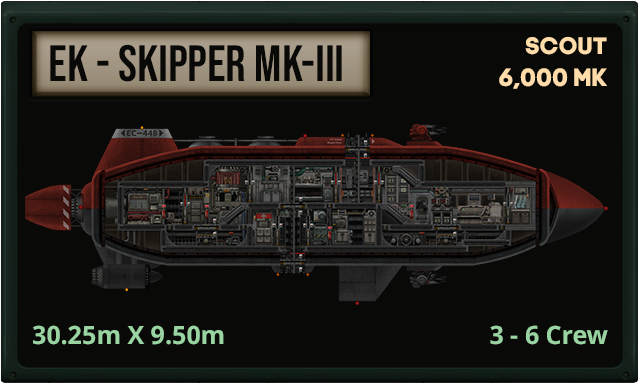
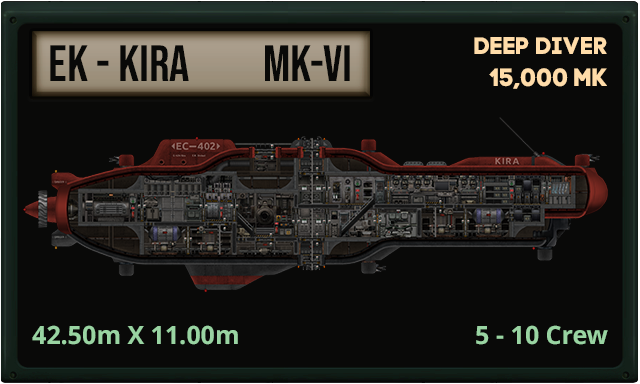
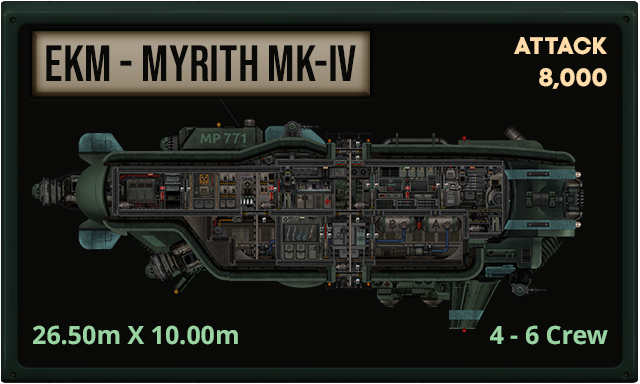
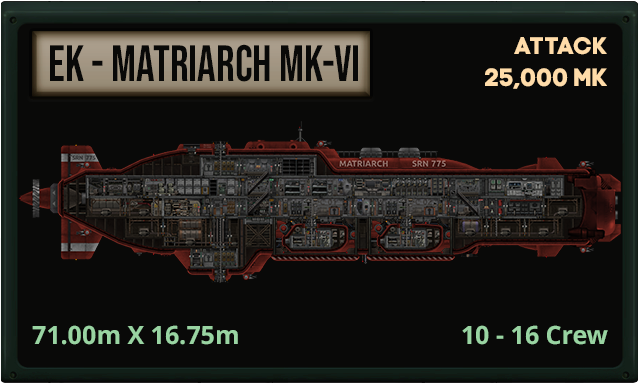
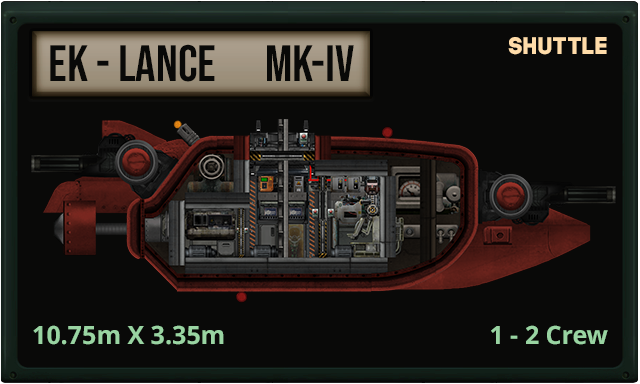
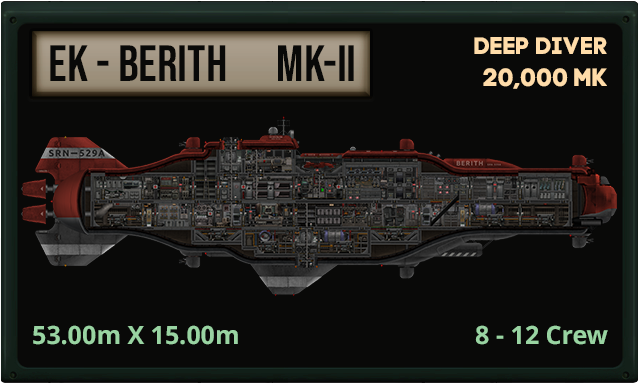
Leave a Reply